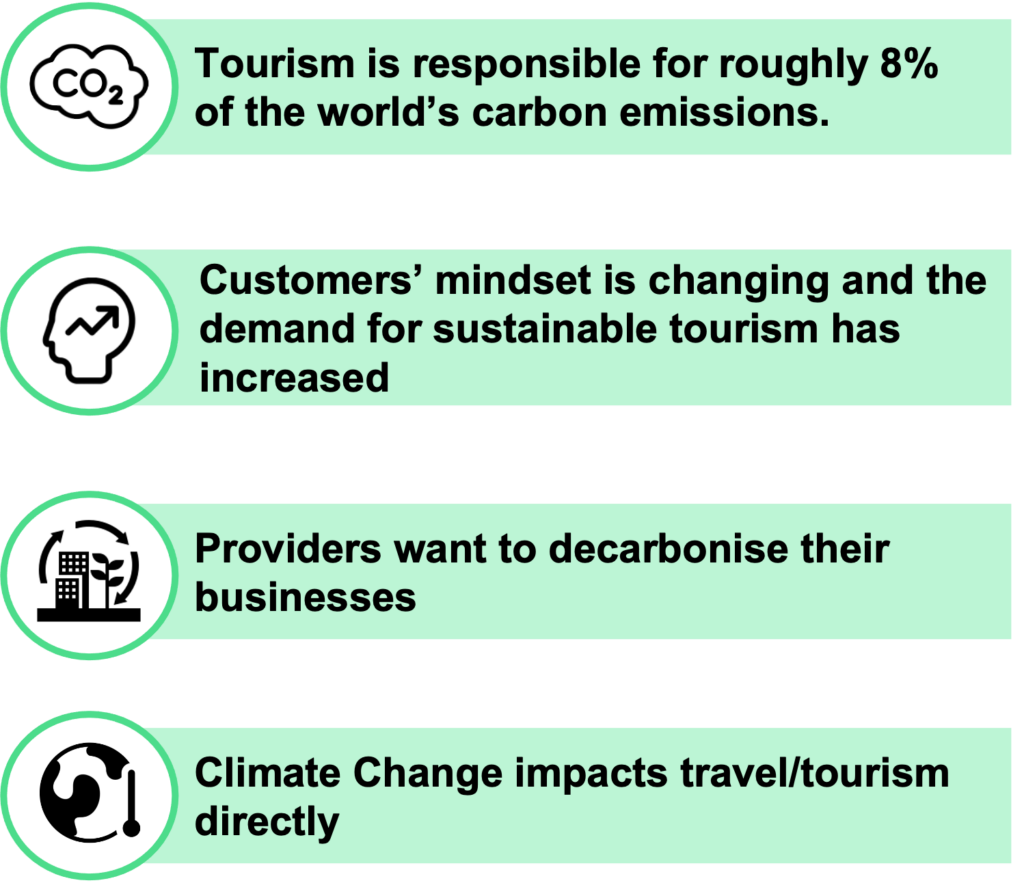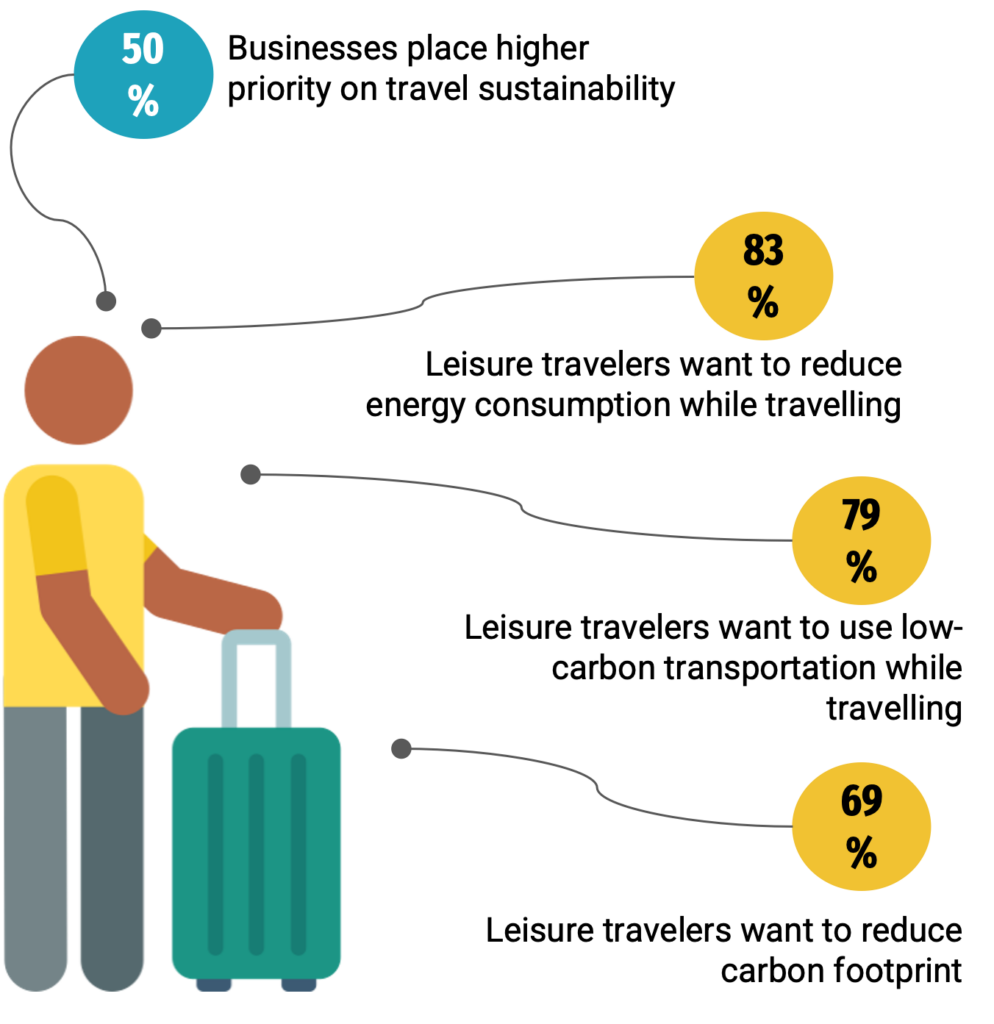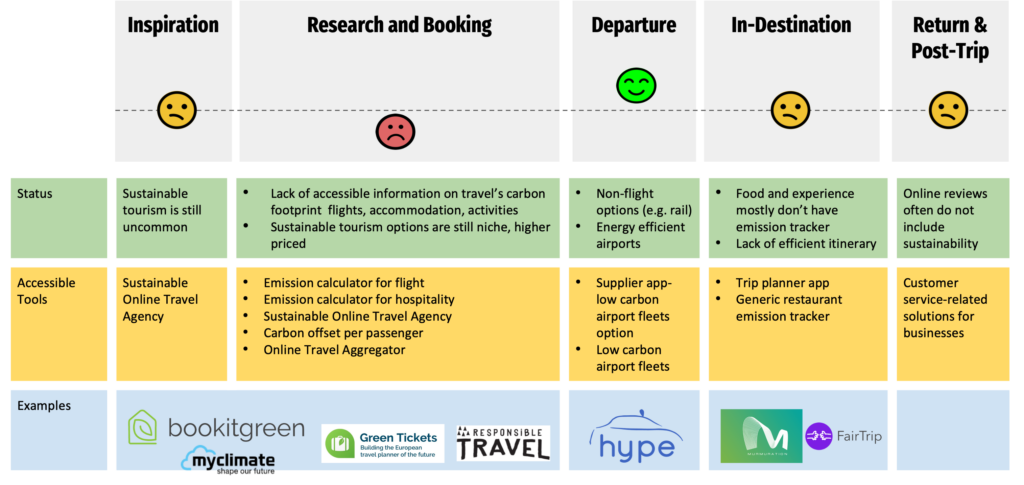As the world reopens, we come to learn a new word – ‘revenge travel’. The demand for flight tickets and travel bookings are surging through the roof as we try to shrug the fatigue of lock downs behind us. The pandemic has impacted everyone across the board, but it hit the travel industry especially badly. For example, in 2020, the global GDP is reported to have declined 3.7% compared to the 50% decrease of the travel industry contribution to the total global GDP. Two-thirds of the aircrafts are grounded, and hotels’ revenues were down by 65%.
But one silver lining from this crisis is the trigger to reinvent itself – to ensure it can keep up with demands from customers, suppliers, and regulators. Sustainable tourism is no longer a fad – but something real that will ensure we can continue travelling with a good conscience. There is an increase in both leisure and business travellers who prioritise travel options with reduced or minimum impact to the environment. The supply chain and industry players are recognising this and have started to respond accordingly. This is really a pivotal point since the impacts are more prevalent and there is increased awareness across the ecosystem.

A key change catalyst is customer behaviour. Though customer centricity is key across all industries, it is certainly the foremost consideration in this sector. And we are seeing very encouraging signs of increased awareness and preference for sustainable travel.


Nevertheless, cost is still a major consideration for travellers therefore there is still a value-action gap. There are 3 main barriers (J Blake, 1999) in addressing the gap, but the responsibility lies with both the travellers and providers:
- Individuality barriers – Lack of interest and effort in solving environmental challenge which relates to demand-side characteristics.
- Responsibility barriers – Lack of a sense of responsibility relating to a specific environmental challenge (i.e. belief that other individuals/organisations should take the responsibility).
- Practicality barriers – Personal lack of time, money, information, facilities or the individual is physically unable to put the practice into action. This relates more to supply-side characteristics.
As the individuality barriers are clearing, it is still an uphill battle to remove or reduce the responsibility and practicality barriers especially. We are creatures of habit and convenience hence there to break this practicality barrier, there needs to be a sufficient level of information to help drive the right behaviour, a good stream of options that are not simply overpriced for the sake of green washing and compelling enough for travellers to embrace it.

The customer journey above clearly illustrates that the industry still has quite a big gap to fill when it comes to helping travellers understand what sustainable travel is and how to find and curate a travel itinerary that is truly memorable with minimum stress to environment and local communities. However, there are existing tools that travellers can tap onto to begin immersing in sustainable travel. So, are you ready to change the way you travel and opt for more carbon-neutral options?
If you have any thoughts or questions relating to what we discussed please feel free to contact us below.





